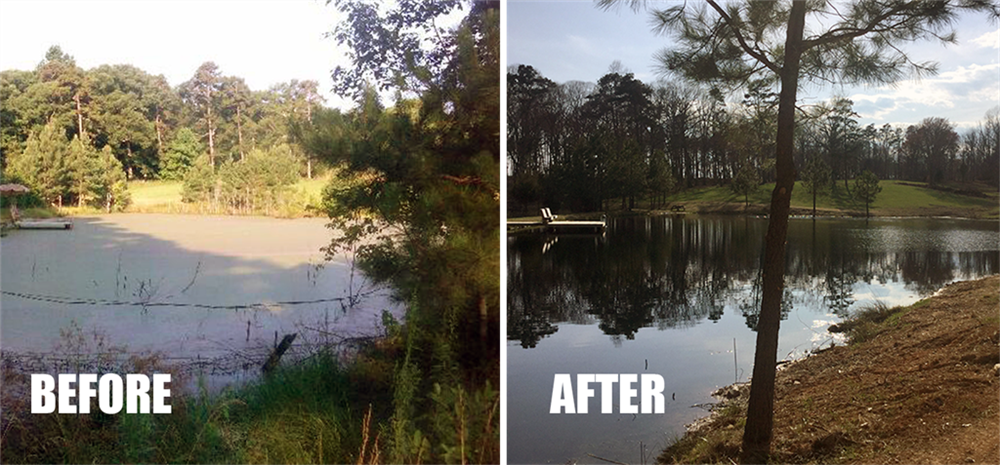We help a lot of customers with their ponds. We measure ponds, look at pictures, identify weeds, and give suggestions on dosing. While we specialize in aquatic chemicals, there are often suggestions given having to do with the surrounding structure/environment of the pond that requires a decent amount of manual labor. Aquatic chemicals can only do so much if there are other factors that contribute to the "problem".
We recently helped a customer battling duckweed, watermeal, and a little algae. These pond problems are some of the most difficult to overcome. Check out a recent blog post on the Steps to Treat a Pond With Duckweed.
One of the most important parts to preventing duckweed after you have treated it, is creating an environment that duckweed doesn't thrive in. This usually involves clearing brush and trees around the pond to allow natural air movement on the surface of the pond. Duckweed thrives in nutrient rich, still water. By clearing the trees and brush around the pond you are creating a way to have natural surface movement as well as preventing excess nutrients from building up due to falling leaves that will accumulate on the pond floor. This repeated accumulation of leaves on a pond floor creates fertile muck on the pond floor that will feed next season's growth.
After giving a customer this advise... they worked all fall cleaning up their pond and sent us some AMAZING before and after pictures of their pond. We couldn't believe it was the same pond.

This customer used the following products:
Tsunami DQ Aquatic Herbicide for Pond Weed Control
Clipper
For more information on treating ponds check out our blog or contact us.
